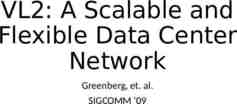Comparison of Generator Governor Dead-band Settings
17 Slides326.55 KB
Comparison of Generator Governor Dead-band Settings ERCOT Interconnection For Years 2008 and 2015 January through November of each year. Sydney Niemeyer, NRG Energy December 7, 2015
Timeline of Governor Settings Prior to November 2008, most generators utilized a maximum governor deadband setting of /-0.036 Hz. – There was a mixture of droop curve implementations. Some provided proportional response from the dead-band while others provided a step response at the dead-band. Beginning April 1, 2015 half of the generators at facilities that had more than one generator were required to implement a maximum dead-band of /-0.017 Hz and provide proportional response from the dead-band, no step response. Beginning October 1, 2015 all of the generators had to implement a maximum dead-band of /-0.017 Hz and provide proportional response from the deadband. Generators with mechanical hydraulic governors must maintain their governors to have a maximum dead-band of /-0.034 Hz. Generators that were not capable of providing Primary Frequency Control were given a waiver on a case by case basis.
Other Improvements in Primary Frequency Control In December 2010, Wind Generation Resources were required to install or activate governor devices and provide Primary Frequency Control. The maximum allowed dead-band was /-0.036 Hz. NERC Regional Standard BAL-001-TRE-1 included performance measures of each generator during identified frequency excursions. These measures began April 1 and October 1 of 2015 on various generators. Minimum performance standards improved the number of generators performing correctly during frequency excursions.
2008 and 2015 January through November of each year. ERCOT FREQUENCY PROFILE USING ONE MINUTE AVERAGE FREQUENCY FROM TWO SECOND DATA
ERCOT Frequency Profile January through November of Each Year One minute average frequency data (corrected for Time Error Corrections) was collected for each minute of 2008 and 2015. The data was arranged in 0.005 Hz bins and each occurrence was totaled. The bar on the next graph represents the number of occurrences of each average frequency.
ERCOT Frequency Profile Comparison 90000 January through November of each Year One Minute Occurances 80000 70000 60000 50000 40000 In 2015 there were 41,661 one minute average frequency values equal to 60.000 Hz or less than 60.005 Hz. 30000 20000 10000 0 2008 2015
Profile Observations In 2008, frequency was random between 59.964 Hz and 60.036 Hz. Then as generator governors began providing control outside this range, the number of occurrences of frequency outside this band decreased. In 2015 with Wind Generation Resources having active governor control, they rarely provide Primary Frequency Response during low frequency deviations, however, they do respond well during high frequency excursions.
How the frequency profile affected generators. PRIMARY FREQUENCY CONTROL ACTIONS OF GENERATOR GOVERNORS.
The Affect on a Single Generator Exposing a single generator of 600 MW capacity to the ERCOT frequency profile in 2008 and then to the ERCOT frequency profile in 2015 had the following results: – In 2008, Droop 5%, Dead-band /-0.036 Hz with a “Step” response resulted in 621,436 MW minutes of Primary Frequency Control. – In 2015 Droop 5%, Dead-band /-0.017 Hz with a “Proportional” response resulted in 197,696.2 MW minutes of Primary Frequency Control. – 68.19% (423,739.8 MW minute) decrease in generator control action by the governor in 2015 as compared to 2008 even with the lower dead-band setting.
160000 Comparison of 2008 0.036 Hz Dead-band to 2015 0.017 Hz Dead-band January through November of Each Year 621436.0 2008 MW Response of 0.036 db 140000 197696.2 2015 MW Response of 0.017 db 68.19% Decrease in MW movement with lower deadband. 120000 MW 100000 80000 60000 40000 20000 0 2008 MW Response of 0.036 db 2015 MW Response of 0.017 db
2008 Vs 2015 January through November. COMPARING THE SAME GENERATOR WITH THE SAME GOVERNOR SETTINGS
The Affect on a Single Generator – Part 2 Exposing a single generator of 600 MW capacity to the ERCOT frequency profile in 2008 and then to the ERCOT frequency profile in 2015 had the following results (same governor settings for both years): – In 2008, Droop 5%, Dead-band /-0.017 Hz with a “Proportional” response resulted in 832,974.5 MW minutes of Primary Frequency Control. – In 2015, Droop 5%, Dead-band /-0.017 Hz with a “Proportional” response resulted in 197,696.2 MW minutes of Primary Frequency Control. – 76.27% (635,278.3 MW minute) decrease in generator control action by the governor in 2015 as compared to 2008.
January thru November 2015 0.0166 db vs. 2008 0.0166 db MW Minute Movement of a 600 MW Unit @ 5% Droop 120000 100000 832974.5 197696.2 2008 MW Response of 0.017 db 76.27% Decrease in MW movement from 2008 to 2015. 2015 MW Response of 0.017 db MW 80000 60000 40000 20000 0 2008 MW Response of 0.017 db 2015 MW Response of 0.017 db
2015 Vs 2015 January through November. COMPARING THE SAME GENERATOR WITH DIFFERENT GOVERNOR SETTINGS
Comparing Different Dead-bands to the Same Year Frequency Profile Exposing a single generator of 600 MW capacity to the ERCOT frequency profile in 2015, one generator with a /0.017 Hz dead-band and the second with a /-0.034 Hz dead-band. – In 2015, Droop 5%, Dead-band /-0.017 Hz with a “Proportional” response resulted in 197,696.2 MW minutes of Primary Frequency Control. – In 2015, Droop 5%, Dead-band /-0.034 Hz with a “Proportional” response resulted in 7,796.8 MW minutes of Primary Frequency Control. – A 96.06% (189,899.4 MW minute) decrease in generator control action by the larger governor dead-band.
January thru November 2015 0.034 db vs. 0.017 db MW Minute Movement of a 600 MW Unit @ 5% Droop 40000 197696.2 2015 MW Response of 0.017 db 7796.8 2015 MW Response of 0.034 db 35000 96.06% Decrease in MW movement with larger deadband. 30000 MW 25000 20000 15000 10000 5000 0 2015 MW Response of 0.034 db 2015 MW Response of 0.017 db
Summary Clearly the lower governor dead-band and proportional droop curve improved frequency control while reducing generator governor control action from 2008 to 2015. Wind Generator Primary Frequency Control provides excellent frequency control for high frequency excursions. Generators with large governor dead-bands have a clear competitive advantage. Requiring similar type generators to have the same governor settings improves the frequency profile while reducing the burden on each generator. Performance requirements ensures proper implementation and control action.






















